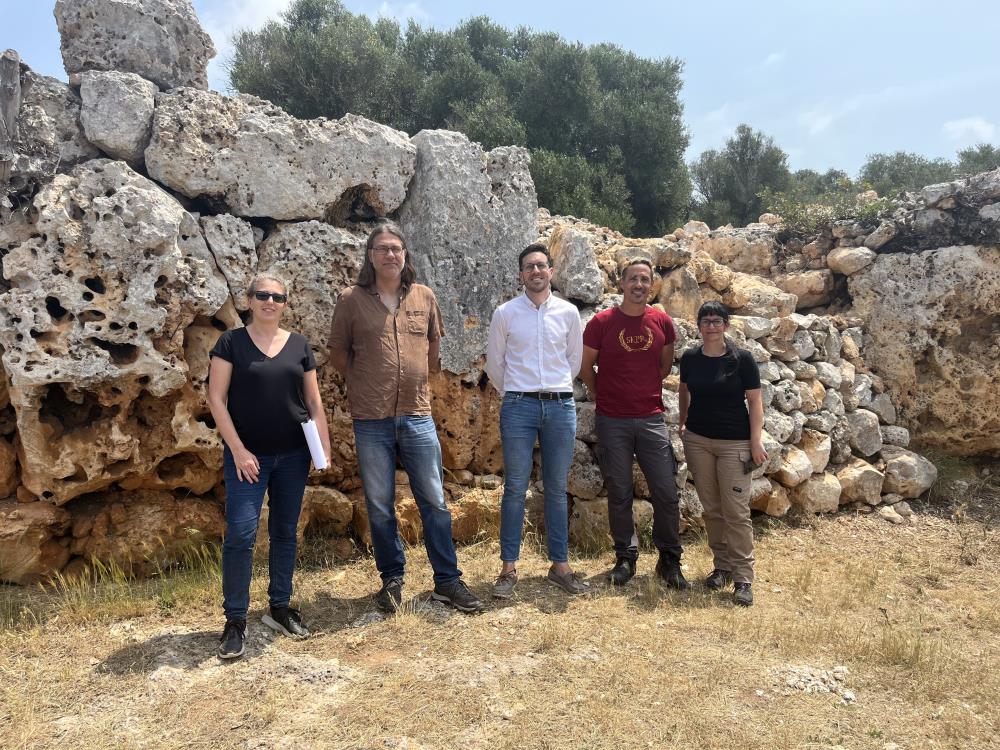
Project led by the Island Council of Menorca uncovers a monumental gate and Late Roman ceramic from the 6th century
The Island Council of Menorca, through the Menorca Talayotic Agency, has completed a significant conservation and restoration project during the month of May on various sections of the wall of the Talayotic settlement of Son Catlar—one of the most emblematic sites of Menorca’s archaeological heritage, and a UNESCO World Heritage Site.
With a total budget of €48,285.05 (VAT included), awarded through public tender, the works were executed by the specialized company Catarqueòlegs SL under the direction of Bernat Burgaya, Margalida Munar, and Cristina Bravo.
The primary objectives of the intervention were to reposition displaced or fallen stones, stabilize structurally vulnerable sections, and halt the degradation process mainly caused by invasive vegetation—especially large wild olive trees. Manual labor was combined with occasional mechanical support to move blocks of up to 5 tons. The removal of the large olive trees and shrub stumps that had grown over the wall was also necessary. This was made possible thanks to decades of maintenance efforts that had weakened these root systems over time. The restoration team carried out work on 12 sections of the wall, which together add up to approximately 80 linear meters.
A key focus was the restoration of wall segments with internal hollow spaces (casemates), which had become unstable due to loss of lateral support. Their consolidation ensures both their long-term preservation and better functional interpretation.
Discovery of a Monumental Gate and a 6th-Century Ceramic Bowl
Two significant archaeological finds emerged during the intervention. First, the identification of a monumental gate on the southwestern section of the wall. Although originally drawn in the 19th century by Émile Cartailhac, its precise location and structure had not been confirmed until now. Current measurements suggest a remarkable monumentality: 2.4 meters high, 3 meters wide, and a 3.4-meter-long internal corridor, potentially laid out in a zigzag configuration.
Second, a ceramic bowl dated to the 6th century AD was recovered in good condition. This find provides new insights into the site's use during the Late Roman period. The artifact is currently undergoing restoration.
Joan Pons Torres, Councillor of Culture, Education, Youth and Sports for the Island Council of Menorca, emphasized: “This intervention at Son Catlar will help highlight the historical importance of the site, with the goal of turning this settlement into a key destination for visitors interested in discovering Talayotic Menorca—just as Torre d’en Galmés is today.”
Son Catlar's wall, nearly 900 meters in length, is unique in Menorca due to its construction with large vertical stone slabs, forming a powerful Iron Age defensive structure. Although generally well preserved, the passage of time had caused displacements and structural weaknesses that required conservation measures to prevent further deterioration.